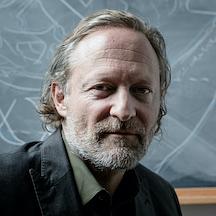-
-
what is a complex system?
-
expectations/requirements
-
-
-
please read this first
-
templates
-
-
-
letters of recommendation
-
1.2 what is a complex system? » a message from SFI's President, David Krakauer
 It has been the great triumph of the sciences to find consistent means of studying phenomena hidden by both space and time, overcoming the limits of cognition and material culture. To hide in space means that phenomena lie beyond the scope of our everyday senses because they are either too small or too distant to be detected without amplification. Things can be hidden in time by being too fast for us to perceive or too slow for a single lifetime to encompass.
It has been the great triumph of the sciences to find consistent means of studying phenomena hidden by both space and time, overcoming the limits of cognition and material culture. To hide in space means that phenomena lie beyond the scope of our everyday senses because they are either too small or too distant to be detected without amplification. Things can be hidden in time by being too fast for us to perceive or too slow for a single lifetime to encompass.
The scientific method is the portmanteau of instruments, formalisms, and experimental practices that succeed in discovering basic mechanisms despite the limitations of individual intelligence.
There are, however, on this planet, phenomena that are hidden in plain sight. These are the phenomena that we study as complex systems: the convoluted exhibitions of the adaptive world — from cells to societies. Examples of these complex systems include cities, economies, civilizations, the nervous system, the Internet, and ecosystems.
Paradoxically, the complex world is one that we can, in many senses, perceive and measure directly. Unlike distant stars or nearby minerals that require a significant increase in optical capability to arrive at insights into their elementary properties, behavior — both individual and collective — seems to present itself in ways that can be investigated rather modestly through observation or experiment.
But the way in which complex phenomena are hidden, beyond masking by space and time, is through nonlinearity, randomness, collective dynamics, hierarchy, and emergence — a deck of attributes that have proved ill-suited to our intuitive and augmented abilities to grasp and to comprehend.
Over the course of thirty-five years, the Santa Fe Institute has been looking into this proximal, near-invisible reality, working in highly diverse, nondisciplinary teams to invent new concepts to render up complex reality to science; searching for order in the complexity of evolving worlds.
